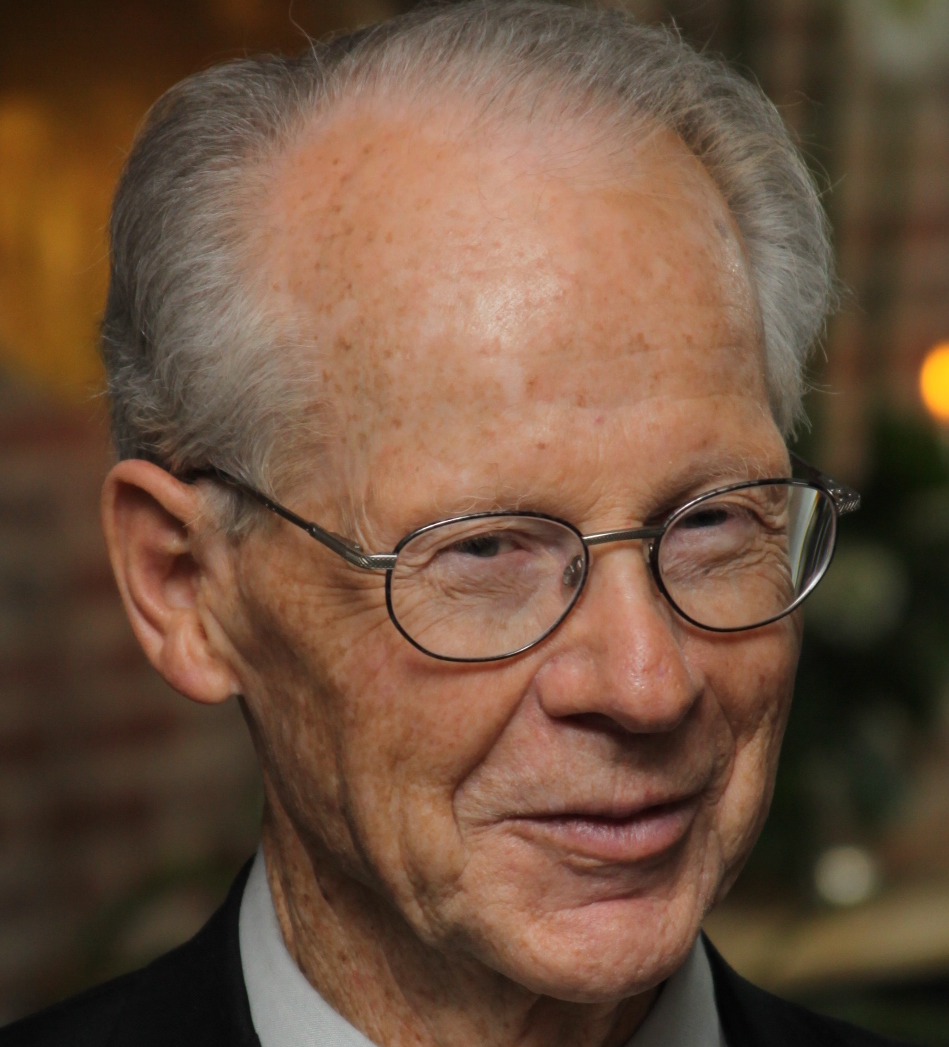Williamson’s Early Life and Education
Oliver Eaton Williamson (1932–2020) was born in the town of Superior, in the northwestern corner of Wisconsin. Superior, which is situated on Lake Superior, sits opposite Duluth, Minnesota, on the southern shore of St. Louis Bay (the mouth of the St. Louis River).
Both of Williamson’s parents were high school teachers.
After attending public schools in Superior, Williamson enrolled in MIT’s Sloan School of Management, where he obtained his bachelor’s degree in 1955.
After graduating from MIT, Williamson worked for a few years for several different organizations, notably the General Electric Company (GE) and the Central Intelligence Agency (CIA).
Williamson then decided to go to graduate school, first studying business at Stanford University, and then studying economics at the Carnegie Institute of Technology (later known as Carnegie Mellon University).
Williamson earned his MBA in 1960 and his PhD in 1963. He wrote his doctoral dissertation at the Carnegie Institute on the subject of transaction costs, under the supervision of Ronald H. Coase and Herbert A. Simon, among others.
Williamson’s Career
Williamson was hired out of the gate in 1963 as an assistant professor of economics at the University of California, Berkeley, where he taught for two years.
In 1965, Williamson moved to the University of Pennsylvania in Philadelphia, where he remained until 1983.
In that year, Williamson was appointed the Gordon B. Tweedy Professor of Economics of Law and Organization at Yale University in New Haven, Connecticut.
In 1988, Williamson received a joint professorship in economics and law at the University of California, Berkeley. At the same time, he was appointed the Edgar F. Kaiser Professor Emeritus at Berkeley’s Haas School of Business.
In 1999, Williamson spent a semester teaching economics as a visiting professor at the University of Siena in Italy.
In 2009, Williamson shared with Elinor Ostrom the Nobel Memorial Prize in Economic Sciences. His Nobel Lecture, “Transaction Cost Economics: The Natural Progression,” was published the following year in the American Economic Review (see “Selected Works by Williamson” below).
Williamson’s Ideas
Williamson’s main contributions lie in the fields of (1) the theory of the firm, (2) the economics of transaction costs (which he pioneered), and (3) the analysis of the impact of social institutions on the economy, a research area which has come to be known as the “New Institutional Economics.”
Williamson’s work in all three areas, but especially the first, has been influential beyond the boundaries of academic economics, extending to the social sciences, more generally.
Though seemingly somewhat disparate in nature, Williamson’s main areas of interest were in fact connected to each other.
For one thing, transaction costs are experienced not only in market transactions, but also within organizations of all types, especially business firms—which explains the connection between the first and second fields mentioned above.
Moreover, in addition to business firms, many other types of social institutions, such as civil associations, households, government bureaucracies, and other public agencies of all types experience transaction costs, as well—thus linking the second and third fields.
Among Williamson’s many important discoveries, two are especially noteworthy: (i) He showed that business firms and markets employ quite different methods of conflict resolution; and (ii) He demonstrated that in certain circumstances organization may be more efficient than markets because the sorts of conflicts that arise in the former tend to be simpler and so cheaper to resolve.
Selected Works by Williamson
1. Selected Works Authored by Williamson
The Economics of Discretionary Behavior: Managerial Objectives in a Theory of the Firm(1974).
Markets and Hierarchies: Analysis and Antitrust Implications (1975).
“The Economics of Organization: The Transaction Cost Approach,” American Journal of Sociology, 87: 548–577 (1981).
The Economic Institutions of Capitalism (1985).
Economic Organization: Firms, Markets, and Policy Control (1986).
Antitrust Economics: Mergers, Contracting, and Strategic Behavior (1987).
Perspectives on the Economics of Organization (out of print) (1989).
Comparative Economic Organization: The Analysis of Discrete Structural Alternatives (out of print) (1994).
Organization Theory: From Chester Barnard to the Present and Beyond (1990; expanded ed., 1995).
The Mechanisms of Governance (1996).
“The Theory of the Firm as Governance Structure: From Choice to Contract,” Journal of Economic Perspectives, 16: 171–195 (2002).
“Transaction Cost Economics: The Natural Progression,” American Economic Review, 10: 673–690 (2010).
Contract, Governance and Transaction Cost Economics, edited by Gengxuan Chen (2017).
2. Books Edited or Co-edited by Williamson
Prices: Issues in Theory, Practice, and Public Policy, with Almarin Phillips (1967).
Antitrust Law and Economic (1980).
Industrial Organization (1990).
The Firm as a Nexus of Treaties, with Masahiko Aoki and Bo Gustafsson (1990).
The Nature of the Firm: Origins, Evolution, and Development, with Sidney G. Winter (1991).
Transaction Cost Economics, with Scott E. Masten (1995) (reprinted as The Economics of Transaction Costs, 1999).
Selected Works About Williamson and His Work
Alchian, Armen A. and Susan Woodward, “The Firm Is Dead; Long Live the Firm: A Review of Oliver E. Williamson’s The Economic Institutions of Capitalism,” Journal of Economic Literature, 26: 65–79 (1988).
Ankarloo, Daniel and Giulio Palermo, “Anti-Williamson: A Marxian Critique of New Institutional Economics,” Cambridge Journal of Economics, 28: 413–429 (2004).
Baudry, Bernard and Virgile Chassagnon, “The Close Relation Between Organization Theory and Oliver Williamson’s Transaction Cost Economics: A Theory of the Firm Perspective,” Journal of Institutional Economics, 6: 477–503 (2010).
Brousseau, Éric and Jean-Michel Glachant, eds., New Institutional Economics: A Guidebook (2008).
Carroll, Glenn R. and David J. Teece, eds., Firms, Markets and Hierarchies: The Transaction Cost Economics Perspective (1998).
Englander, Ernest J., “Technology and Oliver Williamson’s Transaction Cost Economics,” Journal of Economic Behavior and Organization, 10: 339–353 (1988).
Groenewegen, John, ed., Transaction Cost Economics and Beyond (1995).
Klein, Peter G. and Michael E. Sykuta, eds., The Elgar Companion to Transaction Cost Economics (2010).
Ménard, Claude and Mary M. Shirley, eds, Handbook of New Institutional Economics (2005).
